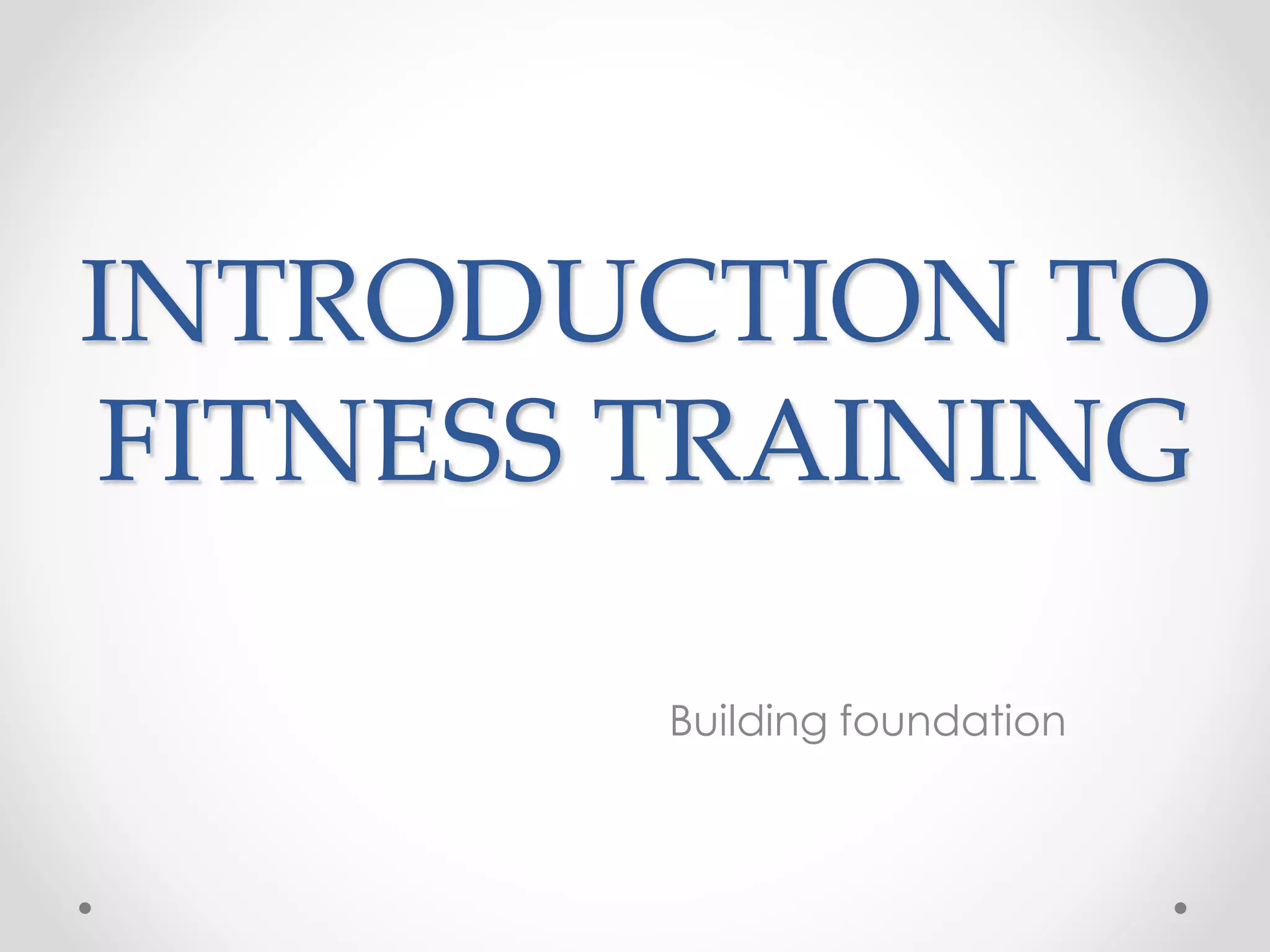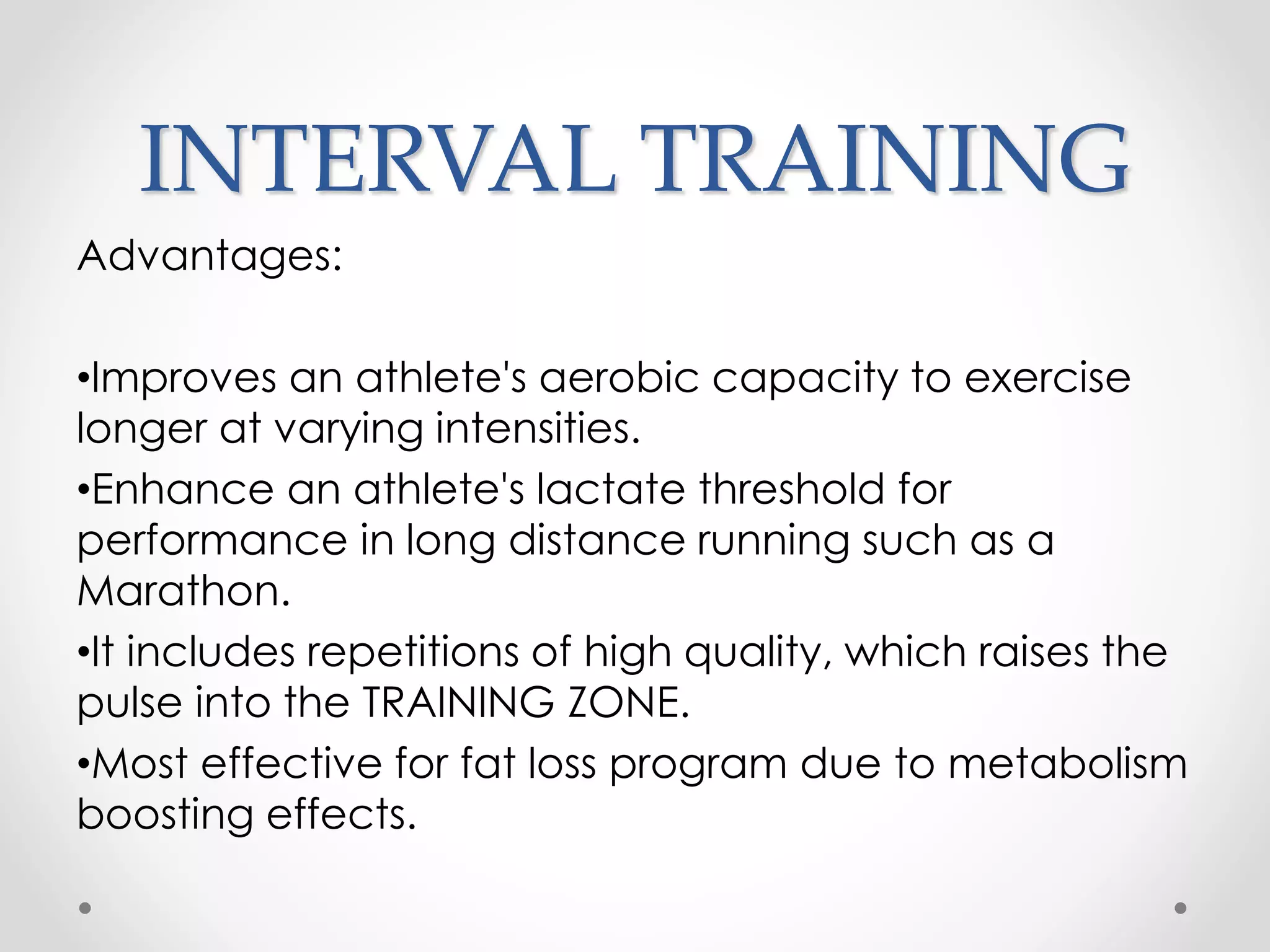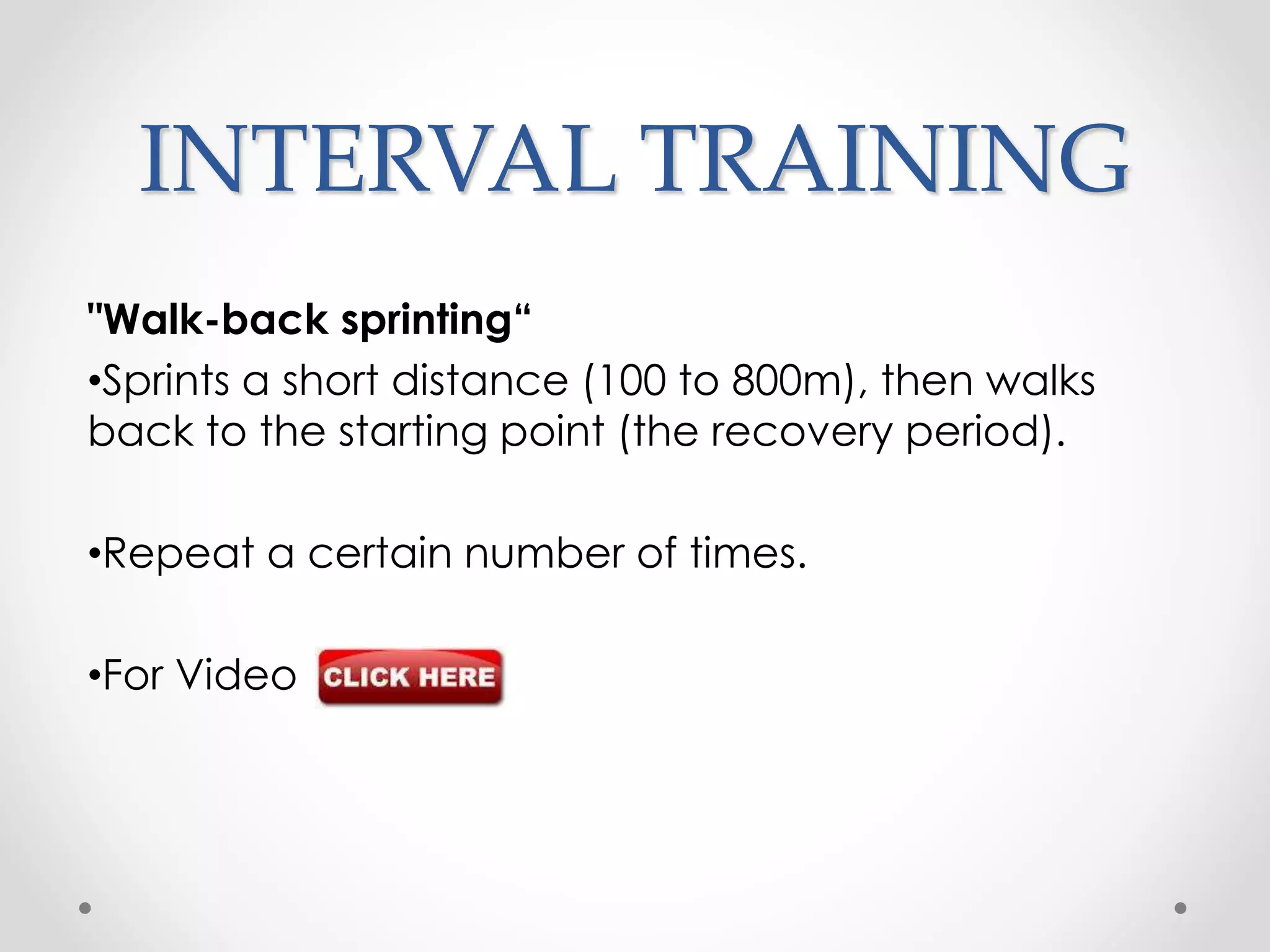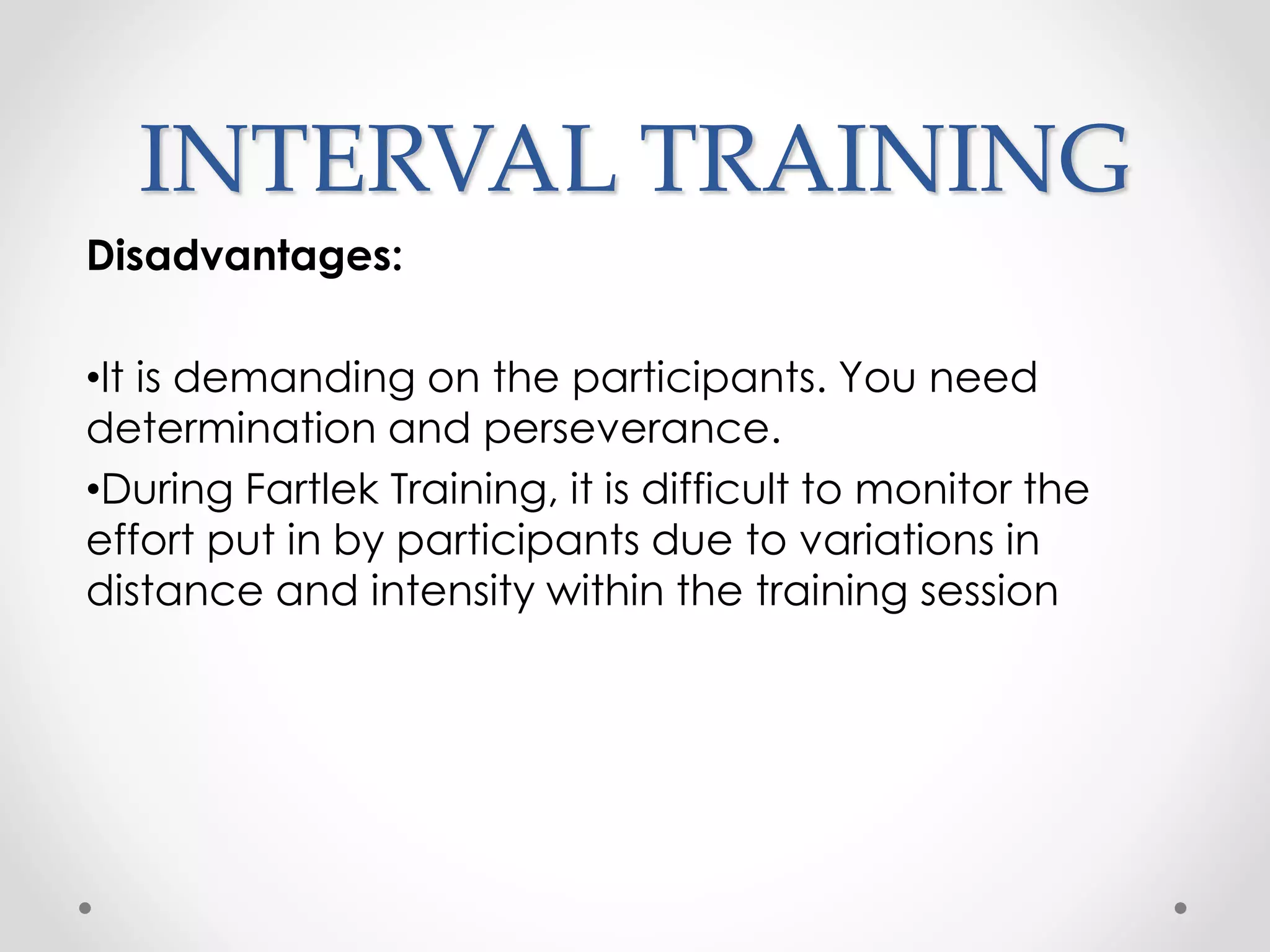This document provides an introduction to different types of fitness training methods. It discusses interval training, which involves bursts of high-intensity exercise alternated with low-intensity recovery periods. It also covers tempo/continuous training, which builds endurance through long, moderate-paced runs. Circuit training is described as combining strength, cardio, and muscular endurance exercises done in circuits with short rest periods. Weights training builds strength through progressive resistance exercises, while plyometrics develops power through explosive movements like jumps and throws. The F.I.T.T. principle outlines how to design effective training programs by manipulating frequency, intensity, time, and type of exercise.






































